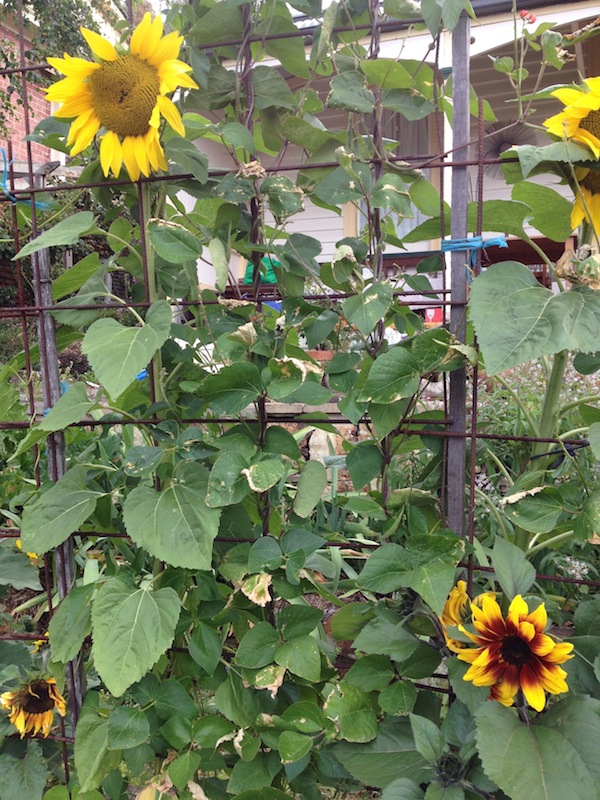Tasmania is blessed with a mild climate, offering growing conditions for vegetables all year round. But sometimes we get a blast of unseasonal heat or cold that can shock plants and devastate an unprepared garden.
While the bushfires raged, and destroyed many a wonderful garden, those of us in the city suburbs were anxiously keeping our own gardens watered and mulched as well as we could.
When conditions are really grim, its useful to focus on perennial plants such as fruit trees, berry bushes, and vines, since annual plants can always be replanted either this season or next. That being said, nobody wants to lose their tomatoes just when the fruit trusses are filling out and starting to ripen. You might see sunburnt patches on soft fruit like tomatoes, stone fruit, and even developing apples and pears. These appear as pale blotches on the sun-exposed side of the fruit, and will eventually develop into a rotten patch, so best to cull these fruit and let the plant put its energy into healthy fruit.
Many plants would have had soft new growth scorched and shrivelled by the ferocious heat. In the picture below you can see the burnt leaf margins of the beans. If there is lots of damage to the leaves, just trim them off and let the plant grow new ones. A bit of leaf margin browning wont hurt though.

You might be finding that climbing beans like these scarlet runners are providing a disappointing yield this year. This is due to the warm weather, which inhibits the fruit set in beans. You can help a bit by spraying the flowers with water on warm days. Scarlet runner beans do tend to drop off in yield after a couple of years, so a good policy is to pull them out completely at the end of your second growing season, and plant some new ones the next spring. Anyone who grows their own scarlet runners will always have plenty of seed!